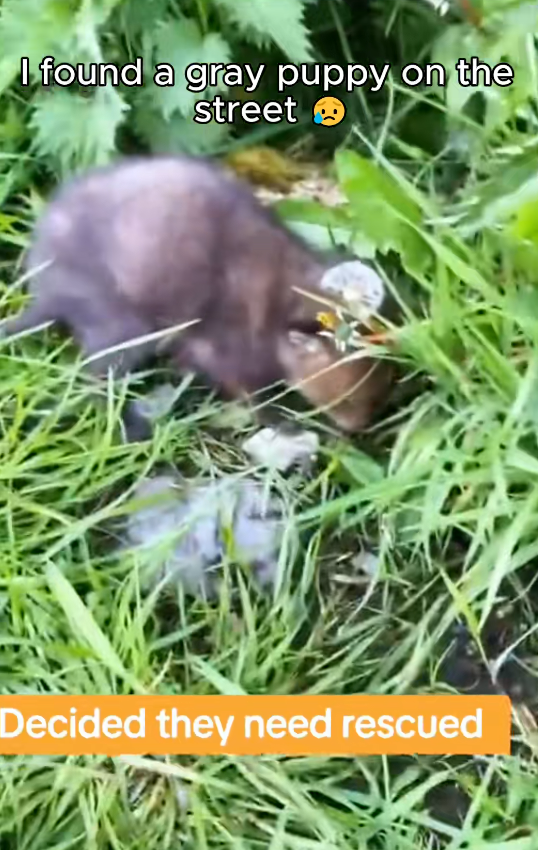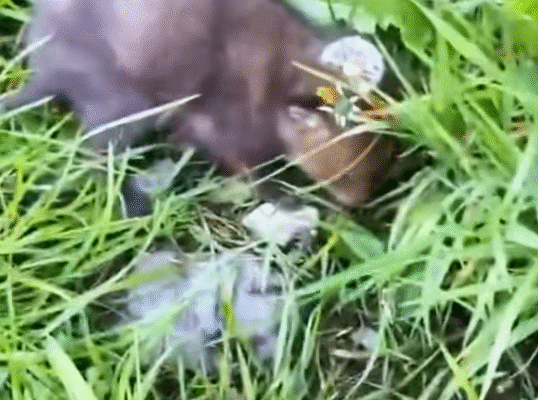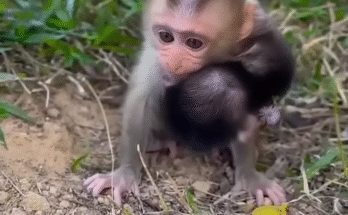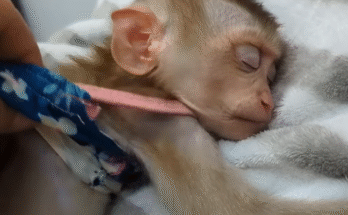It was a cool morning, the kind where the mist lingers in the trees and the air smells like wet leaves and pine. I had decided to take an early hike through the old forest trail behind my grandparents’ farm. That trail had been part of my childhood—tree forts, pretend sword fights, and berry-picking memories—but I hadn’t been back in years. Something about that morning pulled me to return, and I had no idea that this hike would lead to one of the most unexpected and unforgettable experiences of my life.
As I made my way along the familiar dirt path, now slightly overgrown with moss and ferns, I noticed something strange near a fallen log. A patch of silver-gray fur barely moved in the shadows. At first, I thought it was a rabbit, injured maybe, but as I crept closer, I realized it was a small gray fox. Its sleek body was curled up, shivering, and one of its hind legs appeared twisted unnaturally beneath it.
I froze. Foxes are wild animals, and approaching them can be dangerous, even if they’re small. But something in this one’s eyes—wide, glassy, and full of fear—made me feel more protective than cautious.

Slowly, I crouched down a few feet away and spoke in a soft voice, “Hey there, little one. What happened to you?”
It didn’t move, didn’t even growl or run. I could see it was exhausted. Perhaps it had been hit by a car and limped its way into the woods. There were no obvious wounds, but it was clearly in distress.
I took off my hoodie and gently laid it over the fox. At that moment, it flinched but didn’t fight. Carefully, I scooped it up and held it close to my chest. I could feel its rapid heartbeat. I didn’t know much about wildlife rescue, but I knew I couldn’t just leave it there to suffer.
I hurried back to the farmhouse. My grandfather raised his eyebrows when he saw me holding the fox.
“Is that… a gray fox?” he asked.
“I think it’s hurt. Can we call someone?” I replied, breathless.
He nodded and grabbed his old phonebook. A few calls later, we got in touch with a local wildlife rehab center about forty minutes away. They agreed to take the fox and check on its condition. I wrapped it gently in a towel, placed it in a crate we used for stray cats, and set off in my car.
That drive felt like the longest of my life. Every little whimper the fox made sent a wave of panic through me. But at the same time, I felt deeply connected to this creature. Something about it stirred a quiet place inside me that I hadn’t known was there.
The rehab center was nestled at the edge of a forest reserve. The moment I arrived, a staff member rushed out with a stretcher. They carefully transferred the fox inside, reassuring me that it was in good hands.
Over the next week, I couldn’t stop thinking about that fox. I called the center every couple of days to check on its condition. They told me that it had suffered a fracture in its hind leg and some internal bruising but was stable and healing. They’d named it “Ash” because of its smoky-gray fur.
Eventually, they invited me to visit.
Ash was in a small, quiet enclosure with soft bedding and a few toys to keep him mentally stimulated. He was alert but cautious. When I walked up, he tilted his head slightly, as if trying to recognize my scent. I sat quietly on a bench nearby, not expecting interaction, just happy to see him alive.
To my surprise, after a few minutes, Ash slowly limped closer and sat down near the fence. It felt like a thank-you.
The rehab staff told me that Ash would likely be released once his leg healed completely. That was their mission—rehabilitation and return to the wild. But there was a complication. Ash had become slightly too comfortable around humans, a risky trait for a wild fox. He might not survive if he didn’t retain some fear of people.
So they made a decision: Ash would stay at the center in a large, forest-like enclosure designed for permanent wildlife residents. It wasn’t the same as true freedom, but it was safe. And for a fox who might not make it in the wild, it was the best chance at a good life.
They asked if I wanted to volunteer. I didn’t hesitate.
Over the next few months, I spent weekends helping out—cleaning enclosures, preparing food, learning about animal care. Ash remained one of my favorite animals. He never became domesticated, never playful like a dog, but we had a silent understanding. He’d watch me from a distance, and I’d sit nearby, just to be in his presence.
Helping at the rehab center changed something in me. I had always loved animals, but now I felt a sense of responsibility, a desire to do more. I enrolled in some online courses about wildlife biology and conservation. What started as a single act of kindness—finding a hurt animal in the woods—had sparked a new path in my life.
One autumn afternoon, about six months after I found Ash, I stood by his enclosure again. The leaves had turned golden, the air crisp. Ash stood at the far end, his leg fully healed, his coat thick and healthy.
He turned to look at me. For a brief moment, our eyes met, and it felt like closure—like both of us had found something we didn’t know we were missing.
I smiled and whispered, “Thank you, Ash.”
I had found a gray fox in the woods. And then… my whole life changed.



